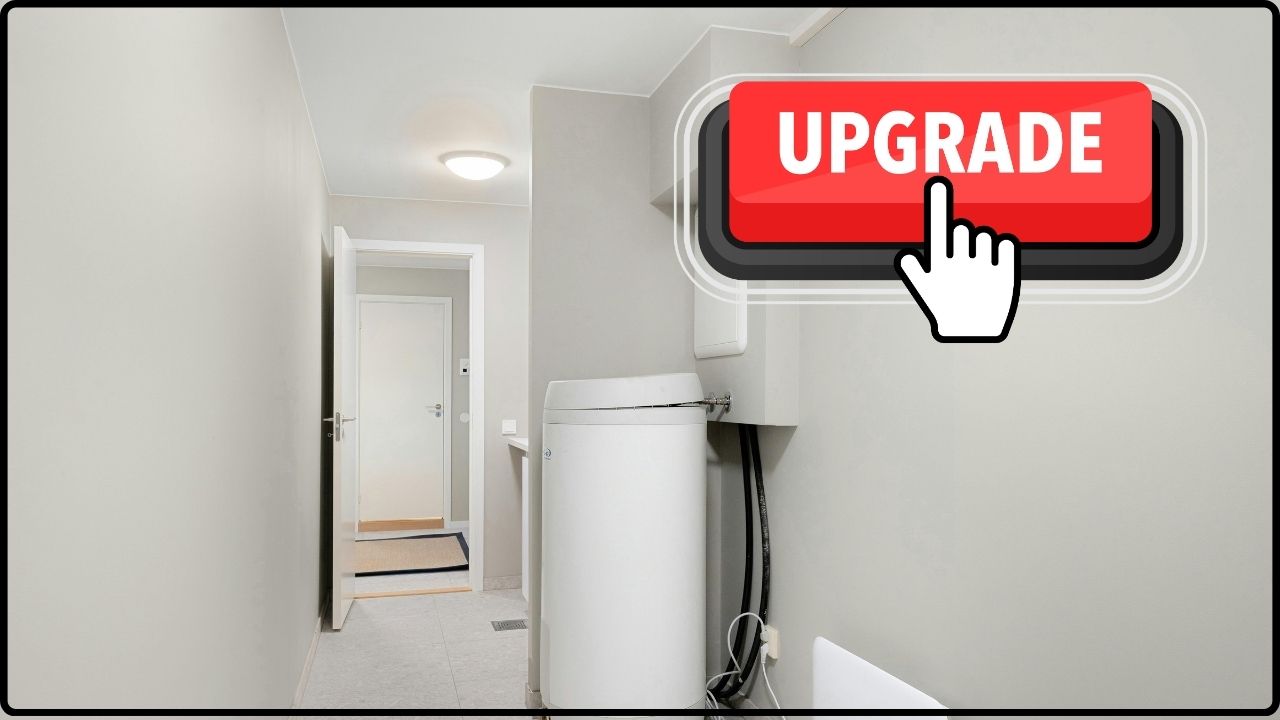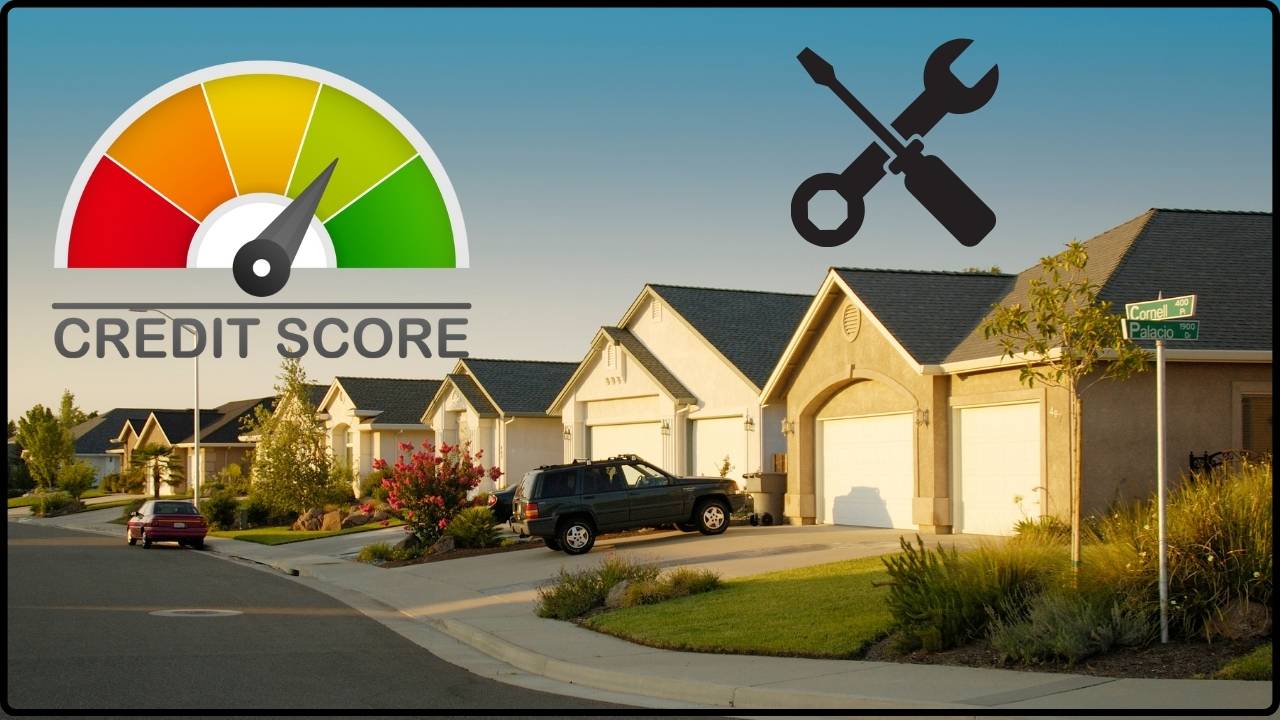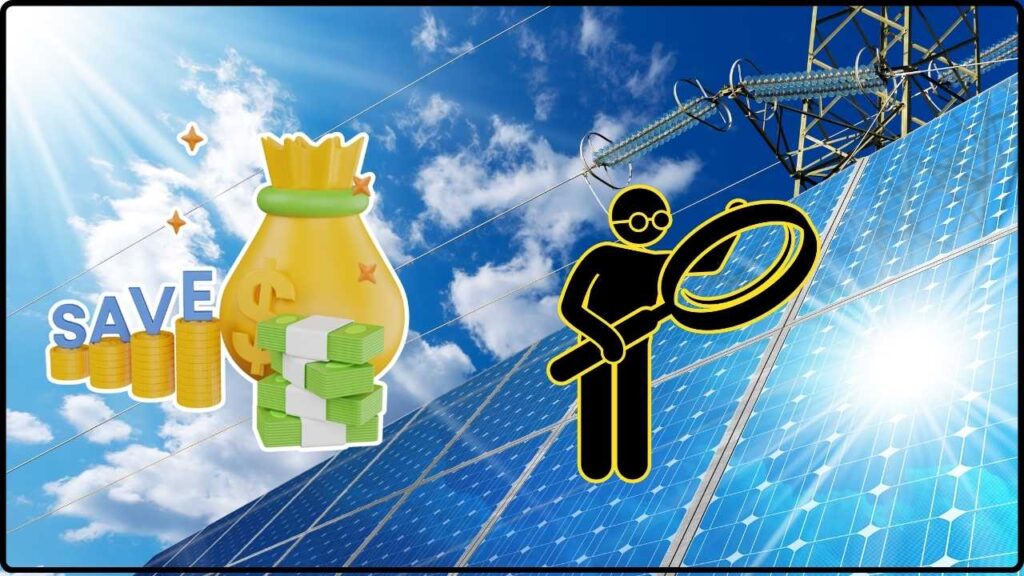
Solar Panels: Thinking about jumping into solar power in 2025? If you’re like most folks, you’re curious whether the initial investment is worth it, especially with the rising costs of energy and the push for renewable solutions. In this comprehensive guide, we’ll explore everything from the real costs of solar panel installation to the incredible long-term savings and the latest technological breakthroughs shaping the future of solar energy. Whether you’re a homeowner, small business owner, or just an energy enthusiast, this article will help you understand why going solar is more than just an eco-friendly choice — it’s a smart financial decision.
Table of Contents
Solar Panels
Going solar in 2025 is more than just an environmentally conscious choice— it’s a smart financial decision that pays dividends for decades. Thanks to falling costs, advanced technologies like perovskite and bifacial cells, and available incentives, homeowners and businesses can enjoy substantial savings, energy independence, and a reduced carbon footprint. By understanding the installation process, leveraging incentives, and embracing the latest innovations, you can make your solar investment work harder and smarter.
| Aspect | Data/Fact | Significance |
|---|---|---|
| Average System Cost | $13,800 – $18,600 (6kW system) | Initial investment for residential solar |
| Federal Tax Credit (ITC) | 30%, ending 2025 | Critical financial incentive |
| Payback Period | 4-7 years | Time needed to recoup investment |
| 25-Year Savings | $37,000 to $148,000 | Long-term financial benefit |
| Monthly Savings | $115 to $200 | Reduction in monthly bills |
| Net Metering Benefits | Credits for surplus energy | Extra savings, possible income |
The Growing Importance of Solar Panels in 2025
Solar energy continues to gain momentum as one of the leading renewable energy sources in the United States, driven by falling costs, increasing technology efficiency, and a growing commitment to sustainability. According to the U.S. Department of Energy, solar power is now among the cheapest sources of electricity in many parts of the country, making it a practical choice for millions of Americans.
The increasing focus on reducing carbon footprints amid climate change concerns, combined with the rising costs of traditional electricity, makes solar panels more than just an investment in cleaner energy—they are investments in future financial freedom. Plus, with federal and state incentives still available in 2025, many homeowners are locking in these benefits before the window closes.
The True Cost of Going Solar in 2025
Understanding the cost structure is key to making a smart decision. An average home solar system in 2025 typically costs around $2.30 to $3.10 per watt, putting a standard 6-kilowatt system in the $13,800 to $18,600 range before applying incentives. This cost includes high-efficiency photovoltaic (PV) panels, an inverter to convert DC to usable AC electricity, mounting equipment, electrical wiring, and professional installation services, plus necessary permits and inspections.
While the upfront cost might seem significant, the Federal Investment Tax Credit (ITC) slashes that by 30%, translating into thousands saved. Various state-level rebates, utility incentives, and net metering programs can reduce that initial price further or provide credits over time for excess energy you produce. This layered savings approach is why many say 2025 is one of the best years to go solar before credits decline after this year.
Additional costs you might face include optional energy storage (batteries) for backup power, which can add $5,000 to $15,000, but greatly enhance your energy independence.
How Solar Panels Saves You Money and Builds Wealth?
Solar panels generate electricity during daylight hours, decreasing or entirely offsetting your reliance on the utility grid. Considering an average U.S. household spends between $115 and $200 monthly on power, the immediate impact on your wallet can be noticeable.
With rising utility rates—often increasing by 3-5% annually—solar panels act as a hedge or insurance against the unpredictability of electricity prices. Over their usual 25-30 year lifespan, solar systems can save Americans between $37,000 to $148,000 depending on geographic location, system size, and local electricity rates.
Payback Period Explained: Breaking even generally takes between 4 to 7 years. After that, the clean energy you generate is effectively free, continuing to reduce carbon emissions while padding your wallet for decades. Unlike traditional power usage, solar savings lock in your energy costs, unaffected by utility inflation.
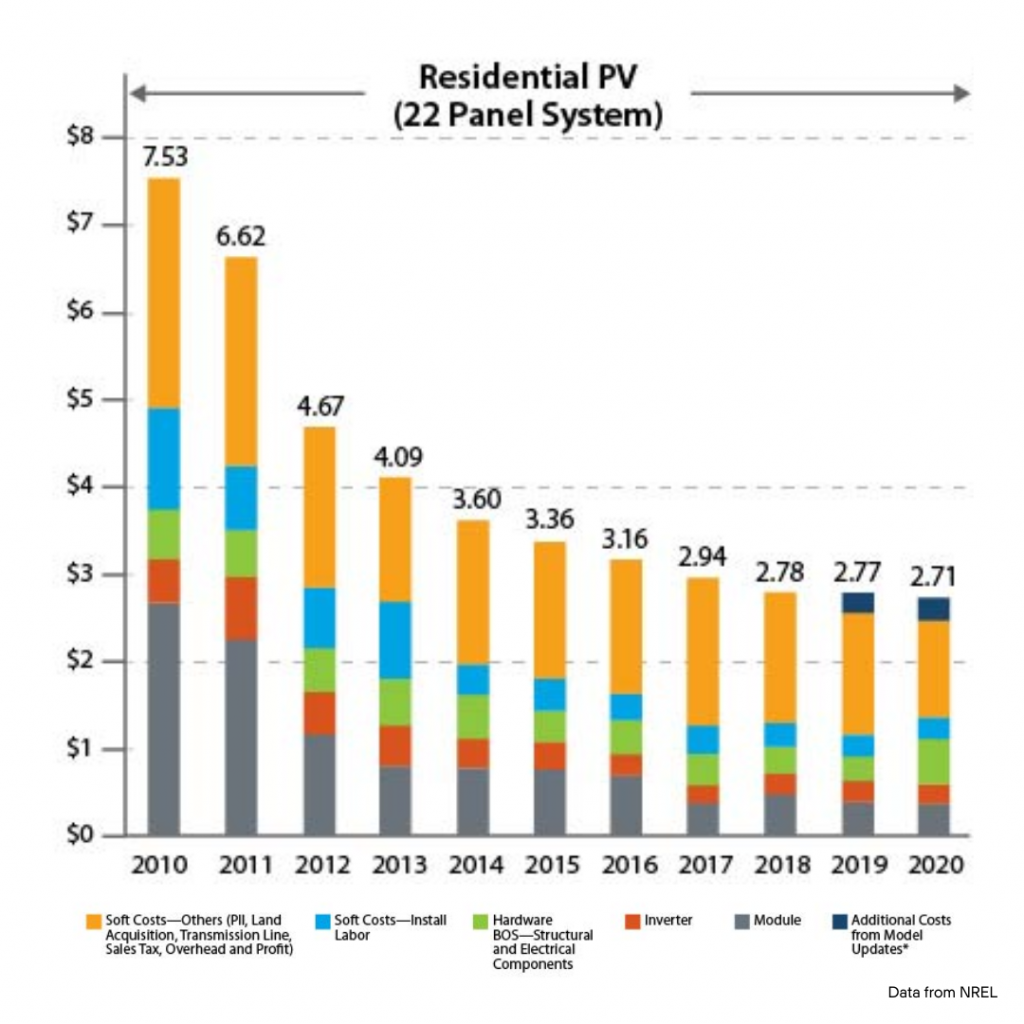
Latest Technological Breakthroughs Revolutionizing Solar Power
2025 marks notable advancements in solar technology, translating directly to increased savings and efficiency for users:
Advanced Solar Cell Technologies
- Perovskite Solar Cells: This promising material offers a lightweight, flexible, and inexpensive alternative, now reaching efficiency rates of over 30%. Tandem panels combining perovskite with traditional silicon cells boast record-breaking efficiencies of nearly 34%, enabling more power from less space.
- Bifacial Solar Panels: Capturing sunlight on both sides, these panels increase energy generation by up to 30%, especially effective in snowy or reflective environments.
- PERC and Heterojunction Cells: Traditional silicon-based cells have been boosted by this enhanced tech, improving performance in partial sun and hot conditions—ideal for many U.S. climates.
Smart and Integrated Systems
- IoT and Smart Monitoring: Internet-connected panels now offer real-time performance data and automated maintenance alerts, reducing downtime and keeping efficiency high.
- Energy Storage Systems: Battery technology has improved, allowing homeowners to store excess solar energy for nighttime or blackout use, enhancing resilience and autonomy.
- Grid Interaction: Next-gen grids equipped to handle distributed solar generation enable easier selling of excess power, boosting homeowner earnings through net metering or feed-in tariffs.
The Solar Panel Installation Process: Step-by-Step
Understanding the installation procedure demystifies one of the biggest steps toward solar adoption:
- Initial Consultation & Site Assessment: Professionals evaluate your home’s roof condition, sun exposure, shading, and energy needs to design a tailored system.
- Permitting & Paperwork: Applications for necessary construction permits and utility approvals are submitted. This phase can take several weeks.
- Mounting Structure Installation: Durable mounts are securely attached to your roof or ground. Panels are positioned with an optimal tilt (usually between 18°–36°) towards the sun’s path for max efficiency.
- Panel Installation: Panels are carefully fixed onto the mounts. Precise alignment and spacing allow for thermal expansion and weather resistance.
- Electrical Work: Wiring connects the panels to the inverter, which is installed nearby, converting DC to AC power usable by your home.
- System Testing & Activation: After inspection and utility approval, the inverter is turned on, marking the system’s operational start.
Installation typically takes 1 to 3 days, but total project time, including permits, averages 2-3 months.
Practical Tips to Maximize Your Solar Investment
- Choose the right system size: An optimized system matches your energy consumption without unnecessary extra cost.
- Maintain your panels: Cleaning and occasional inspections ensure panels operate at peak efficiency over decades.
- Consider battery storage: Protect against power outages and tap into time-of-use pricing benefits.
- Leverage incentives and net metering: Research federal, state, and local programs to maximize financial benefits.
- Stay informed on technology: Solar tech evolves fast—products like bifacial panels or perovskite may offer better returns if you time purchases accordingly.
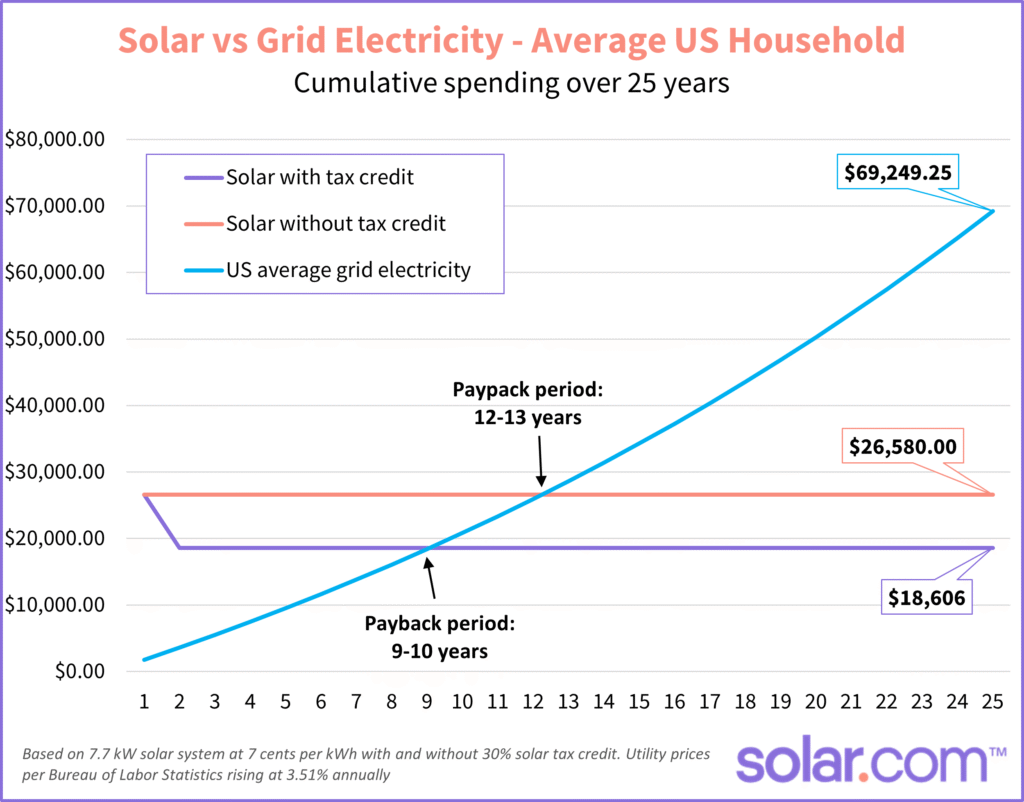
Environmental and Community Benefits of Solar
Solar power isn’t solely a money saver; it’s a massive environmental win. Utilizing clean solar energy reduces greenhouse gas emissions substantially, with a typical 6 kW system offsetting 3 to 4 tons of carbon dioxide annually—equivalent to planting over 100 trees a year.
Moreover, widespread solar adoption reduces strain on utility grids, supports energy independence, and encourages community development of sustainable infrastructure.
The “Oh No!” Fund: How Much to *Really* Save for Emergency Home Repairs
How to Pay for an Emergency Plumbing Disaster (When You Have No Savings)
Personal Loan vs. Home Equity Loan (HELOC): What’s the Smartest Way to Fund a Renovation?


